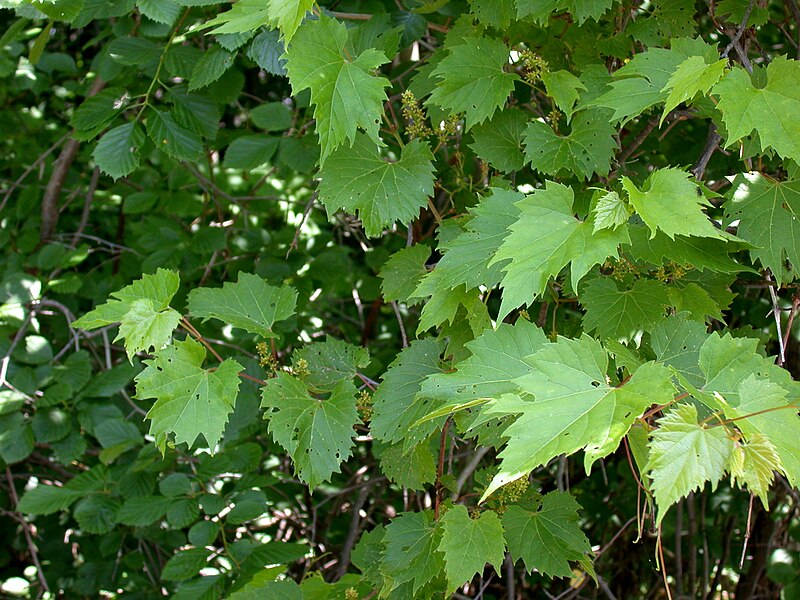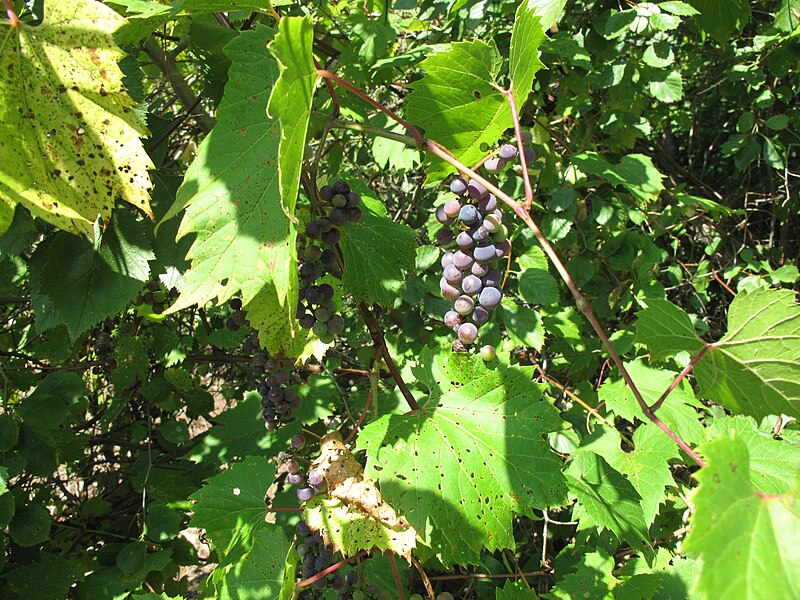Riverbank Grape Identification – Vitis riparia
Heads up
The Riverbank Grape’s scientific name is Vitis riparia. The plant is a member of the Vitaceae family. Besides its scientific name, some folks call it the “Wild Grape” or “Frost Grape”.
Riverbank Grape: Key Parts in Photos




Where to find it
As its name suggests, the Riverbank Grape loves riverbanks, but that’s not the only place it grows. It can also be found in floodplain forests, wooded swamps, and even near fences or at the edges of woods. It prefers soils that are moist but can adjust to average soil types too. When it comes to size, this isn’t a small plant. It’s a vine that can grow up to an impressive 75 feet in length.
How to identify Riverbank Grape
The Riverbank Grape has flowers, but they might be a bit tricky to spot at first because they’re pretty small. These flowers are grouped together in branching clusters that can be up to 5 inches long. The plant can have both male and female flowers. Both types are tiny. These flowers have a greenish to yellowish hue and come with five petals, but the petals often fall off quickly. The male ones have long stamens sticking out, while the female ones have shorter stamens and a small style. These flowers are fragrant.
The leaves of Riverbank Grape are quite characteristic. They’re heart-shaped and can be up to 8 inches long. These leaves have what we call “lobes”. Usually, there are three major ones. When the leaves are young, they might look a bit yellow and shiny and have a web-like hairy texture. But as they grow, they become smooth and green on top, with some hairiness underneath. Young branches are yellowish-green, while older ones turn brown, peel in strips, and might even become woody.
If you’re lucky enough to find the Riverbank Grape in fruiting season, you’re in for a treat. From the flower clusters, fruits develop that dangle down. These fruits look like berries and are usually between 1/2 inch wide. Initially green, they ripen to a blue-black color. The surface of the berries has a white, powdery look,. When you taste these berries, they might be sour. But wait till after a frost, and they turn sweeter.
Want to learn more?

Disclosure: This post includes affiliate links. If you make a purchase through these links, we may earn a commission at no extra cost to you. We appreciate your support, as it helps keep this website running. Alternatively, you can search for the book title on Amazon if you prefer not to use the links. Thank you for your understanding and support!
